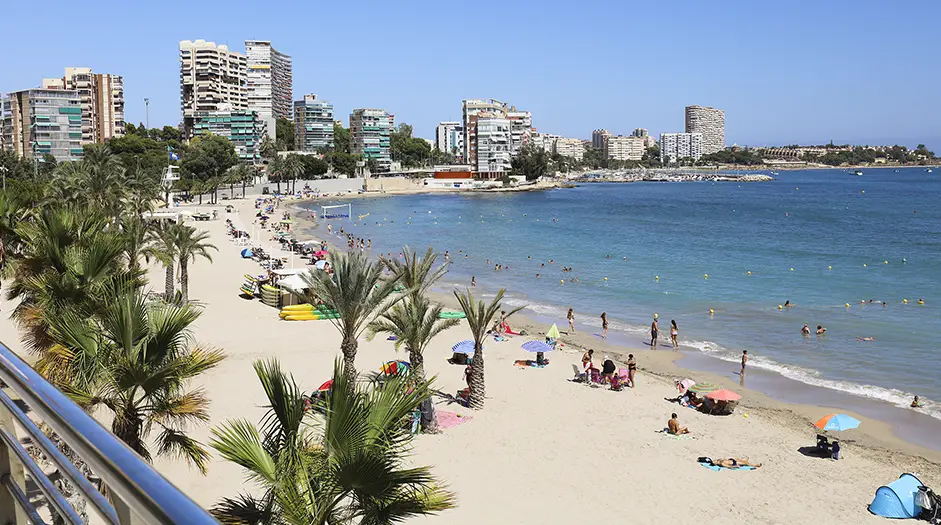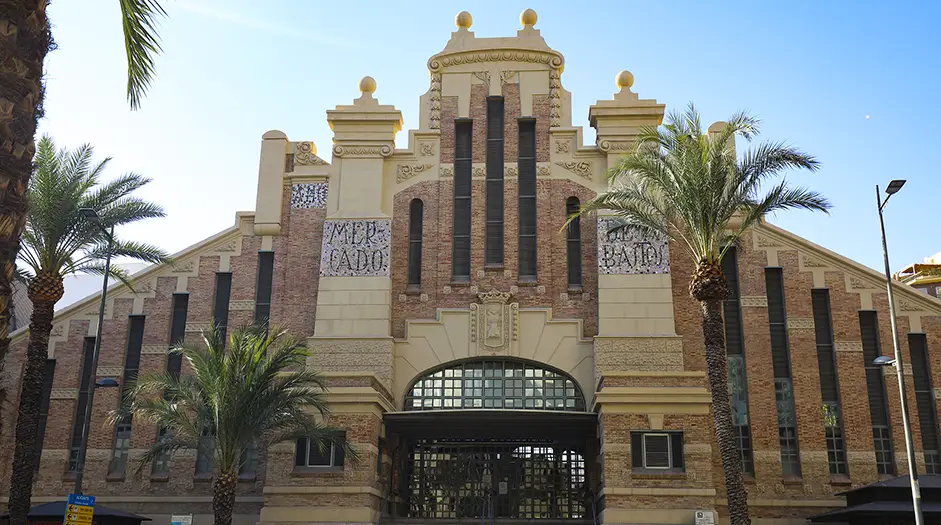Alicante is the lively capital of Costa Blanca, whose popularity is guaranteed by its sunny weather, fine sandy beaches, lively city life and the selection of good-quality restaurants.
Although many continue from Alicante airport to the quieter villages of the Costa Blanca, Alicante is an excellent choice for those who are looking for some action on their holiday.
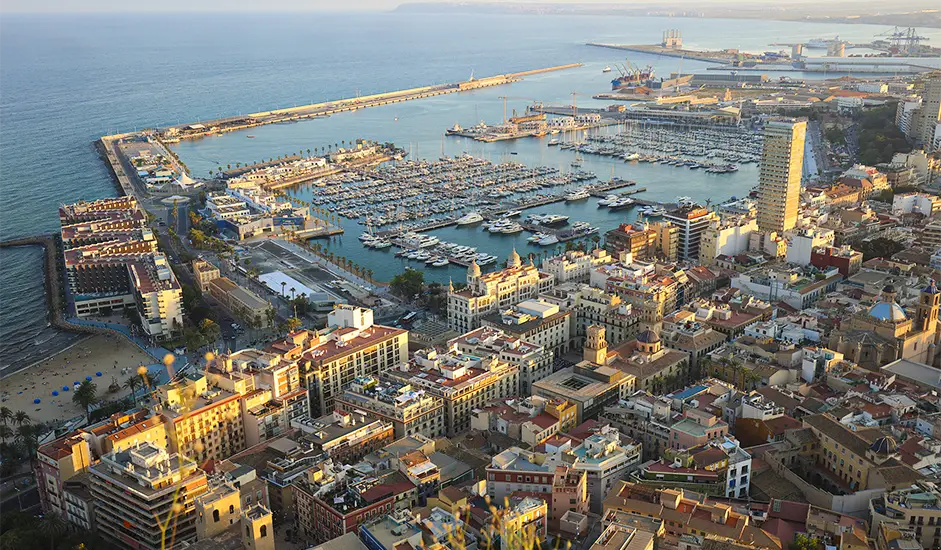
Where to stay in Alicante
Alicante is a nicely compact city, which healthy tourists can easily explore on foot. The center of Alicante, the Old Town (Barri Vell) and the main beach Playa del Postiguet all fit into a roughly 1.5-kilometer long, flat strip of land, and there is hardly any need to go outside this area. Because of this, the center of Alicante is the most recommended area for accommodation.
There are a large number of hotels in the city center area, from which to pick the right one based on your level of requirements and price. In addition, there is an excellent selection of restaurants in the center of Alicante.
Things to do in Alicante
While Alicante has some cultural attractions as well, food and beaches are the most appealing advantages of the city. Alicante has suffered from the clearing of old buildings to make way for new ones, but in the alleys of the Old Town, you can still watch the modern facades blend seamlessly with the 18th century baroque and neoclassical styles. The oldest building in the Old Town (Barri Vell) is the 16th century Basilica of Santa Maria.
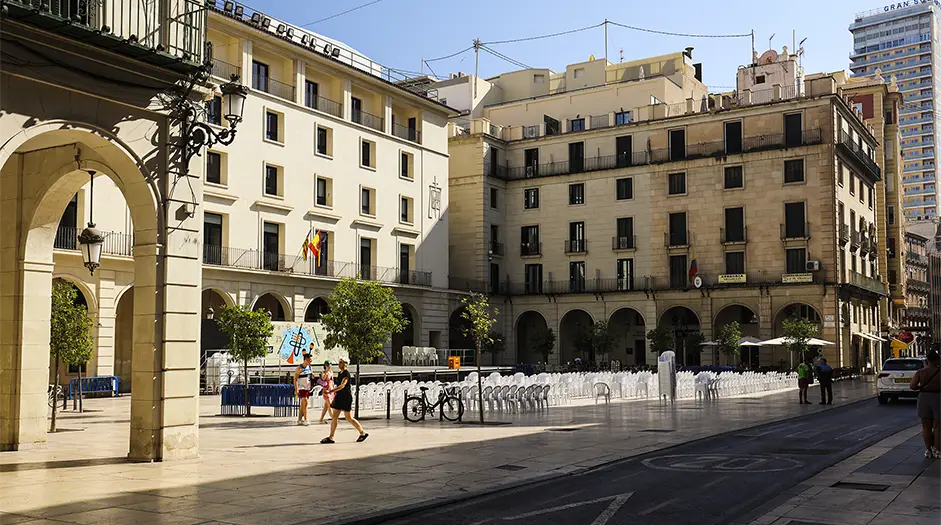
You'll notice Alicante's interesting history at the latest, when you visit the Castillo de Santa Barbára, located on top of the Benacantil mountain bordering the city center. The history of the castello goes back centuries, all the way to the Middle Ages. On the other hand, Alicante's attractions include Alicante's fine-sand beaches and palm tree-lined streets, such as La Explanada de España, i.e., a pedestrian street following the marina.
Castillo de Santa Bárbara
The city's history has developed over millennia at the foot of the 166-meter high Benacantil mountain, bordering the center of Alicante. At the top of the mountain, you'll find the Castle of Santa Bárbara (Castillo de Santa Bárbara), which is by far the most popular attraction in Alicante, and what's more, it's free.
The area of the medieval castle also houses the free Alicante City Museum, where you can learn more about the history of the city. The views of the city of Alicante and the El Postiguet beach unfolding below the castle are in themselves reason enough to visit the castle.
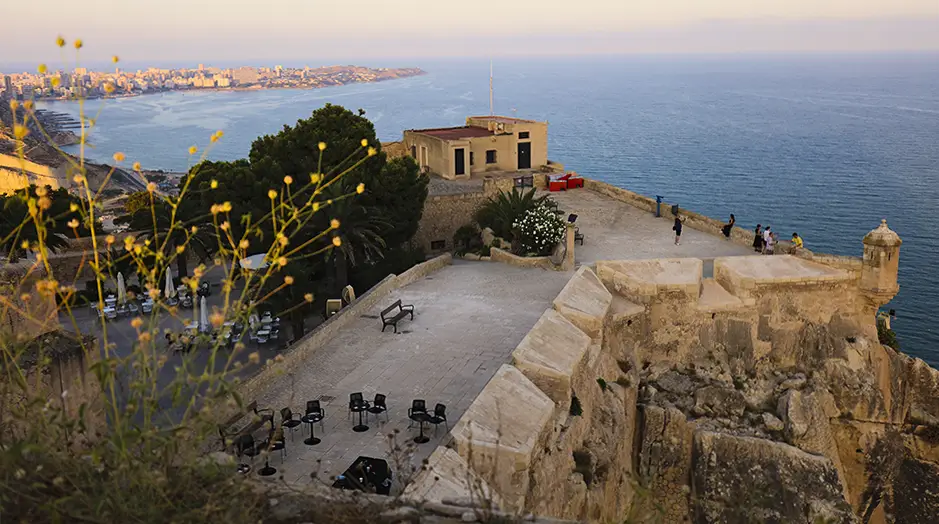
You can get to the castle on foot, by local bus or by elevator from the El Postiguet beach (insert the address 1 Carrer de Jovellanos on Google Maps), which costs about 3 euros. However, you often have to queue for the lift. Therefore, a taxi is a more convenient option, and a ride from the center only costs around 7 euros. Walking up is also not a great effort, so for those in good shape and who enjoy exercise, walking to the castle is a great option.
More information: Castillo de Santa Bárbara
Museums for art and history enthusiasts
Museo de Arte Contemporáneo de Alicante
The Museum of Contemporary Art (Museo de Arte Contemporáneo de Alicante), located in the Old Town of Alicante, is a destination worth visiting. The exhibits feature sculptures and paintings mainly by best-known Spanish artists, big names such as Joan Miró, Salvador Dalí and Pablo Picasso. In addition, the entrance is free.
Website: Museo de Arte Comtemporáneo de Alicante
Gravina Museum of Fine Arts (Museo Bellas Artes Gravina)
The beautiful Gravina Museum of fine Arts, located in the Old Town of Alicante, exhibits old and modern art as well. Entrance to the museum is free.
More information: Museo Bellas Artes Gravina
More information about Alicante's museums can be found on the website of Alicante's tourism.
Beaches in Alicante
Alicante belongs to the Costa Blanca coastal region, which is named after its white sand. The province of Alicante is one of the most popular beach holiday areas in Spain, where people drive even from the capital and fly from all over Europe.
Alicante is a fairly convenient destination for beach vacationers, as the nearly kilometer-long, fine-sand main beach, El Postiguet, is located next to the city center. Alicante's beaches belong to the Blue Flag program, which guarantees that water quality, safety and environment considerations are up to the corresponding standards.
El Postiguet Beach (Playa del Postiguet)
El Postiguet, Alicante's most popular beach, unfolds from the edge of the old town. Its popularity is not a problem though, because there's space for everyone on the almost one-kilometer-long stretch. Therefore, there is no reason to go to any of the other Alicante beaches farther away, since, except for water sports, El Postiguet offers the same. For water sports, you should head to the San Juan beach, located about 6 kilometers away.
The beach water at the El Postiguet beach is shallow enough for children, and there is a playground for children as well. Moreover, there is a beach bar on the beach to get snacks and cool drinks.
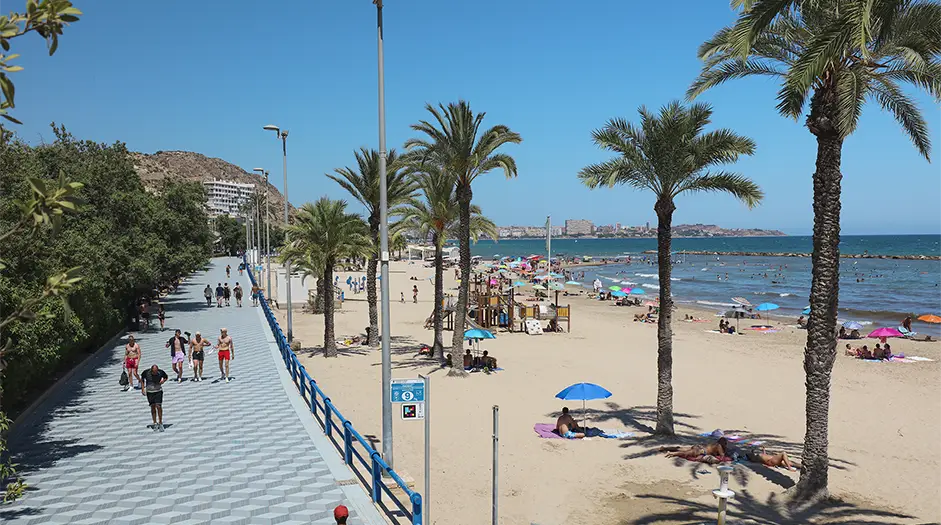
Albufereta Beach (Playa de la Albufereta)
The Playa de la Albufereta beach is a smaller than El Postiguet, and it is situated some 4 kilometers north of the center of Alicante. There is a small playground and a beach bar on the beach. As stated above, Albufereta doesn't offer anything more than the El Postiguet beach. You can get to the beach using line 4 from the center of Alicante (stop: La Isleta).
Shopping in Alicante
Alicante offers good opportunities for shopping. Clothing and cosmetics stores are concentrated between the Alicante train station and Avenida Federico Soto. Avenida Maisonnave, which can be regarded as Alicante's main shopping street, passes through the middle of the area. Along the street, you can find, among other things, two El Corte Inglés department stores.
Regarding groceries, typical local delicacies to consider bringing home include products, such as dried tuna mojama or turrón, similar to nougat. These can be found in, for example, Alicante's main market hall (Mercado Central de Alicante). Even though the puritanical Spaniards don't consider chocolate-covered turrón as turrón anymore, turrón and chocolate make a great combination, nonetheless. The most famous chocolate producer in Spain, Valor, originates from Villajoyosa, a village near Alicante, where the Valor factory and chocolate museum are still located.
Paella is the jewel of the Alicante cuisine
Alicante's restaurants are of high quality, and there are choices of cuisines from many different continents available - there are even Michelin-starred restaurants nearby. While the selection in this big city is extensive, seafood plays the main role in Alicante's local cuisine.
Paella originating from Valencia is also a matter of pride in Alicante. Locally, Paella is referred to as arroz (rice), which is practically synonymous with paella. Arroceria usually refers to restaurants specializing in seafood, which, naturally, serve different types of paella at many different price levels.
Paellas are made in meat, fish & seafood versions, or mixtures of them. Bogavante (lobster) or cigala (langoustine) naturally increases the price of paella, even though the dishes often contain other shellfish, fish, and molluscs as well. Some restaurants offer paella for at least two people, so single diners should check this beforehand. Shellfish (vai Crustaceans?) are usually with their shells in paellas, but several arrocerias also offer a peeled option, called senyoret, in which case you don't have to get your fingers dirty.
An alternative form to the traditional paella is fideuà, where the rice is replaced with small pieces of spaghetti. Fideauà is often served with alioli.
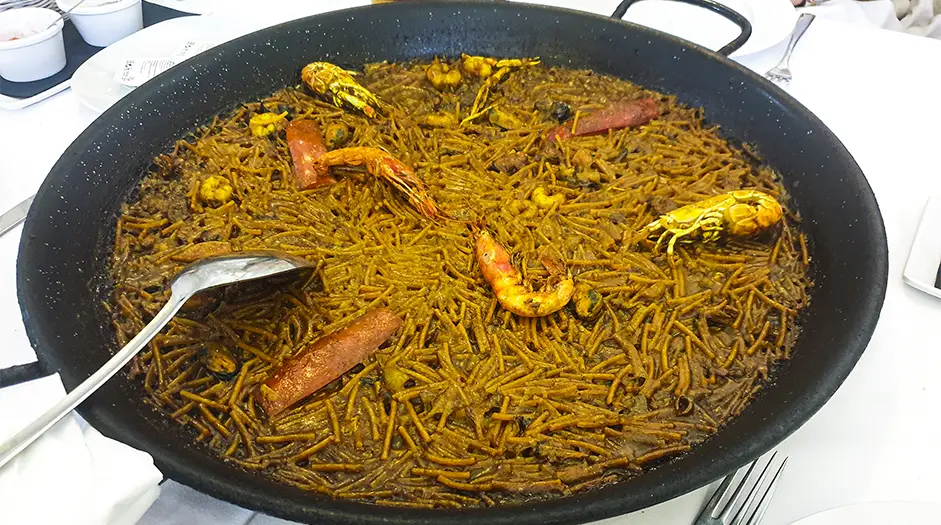
On the streets of Alicante, you will come across horchaterias (orxateria in Valencian) producing horchatas, loved by the locals. Horchata is a milk-like energy drink made of water, sugar, and ground almonds, and served cold with ice. Fartons, sugar-coated wind hat-like pastries, are often enjoyed with horchatas.
Price level
The prices of accommodation rise sharply at the start of the high season in July-August. While hotel room prices are close to Central and Northern European levels, restaurants and bars are significantly more affordable.
Below, there are examples of restaurant and hotel room prices in Alicante. Hotel room prices refer to median prices on Booking.com.
Pizza
Paella
33 cl beer
Hotel room, 3-4* (May)
Hotel room, 3-4* (July)
€10-12
€16-20
€3.50
€100
€140
How to get to the Alicante city from Alicante airport
Alicante-Elche (ALC) International Airport is located approximately 12 kilometers away from the center of Alicante. The alternatives of getting from the airport to the city center are a bus or a taxi.
The Bus line C6 operates approximately every 20 minutes between the airport and the city center, with a journey time of approximately 30 minutes. A one-way bus ticket costs around 4 euros. You can find timetables and stations here.
A taxi ride from the airport to the city center takes about 20 minutes and costs about 20 euros. Local taxis always use a taxi meter.
When to travel to Alicante?
In Roman times, Alicante was known as Lucentum, loosely translated as the City of Light. Alicante's main advantage is its almost guaranteed sunshine, and between May and October, you usually don't have to worry about not having a good holiday weather.
In midsummer, July-August, the heat may be too much for many. At that time, the temperature may reach up to 40 °C. Regarding beach weather and prices, the best time to travel to Alicante is from May to June or September to October. The advantage of early autumn compared to early summer is the temperature of the sea water, which remains around 25 °C in September, while in May the temperature is closer to 20 °C.
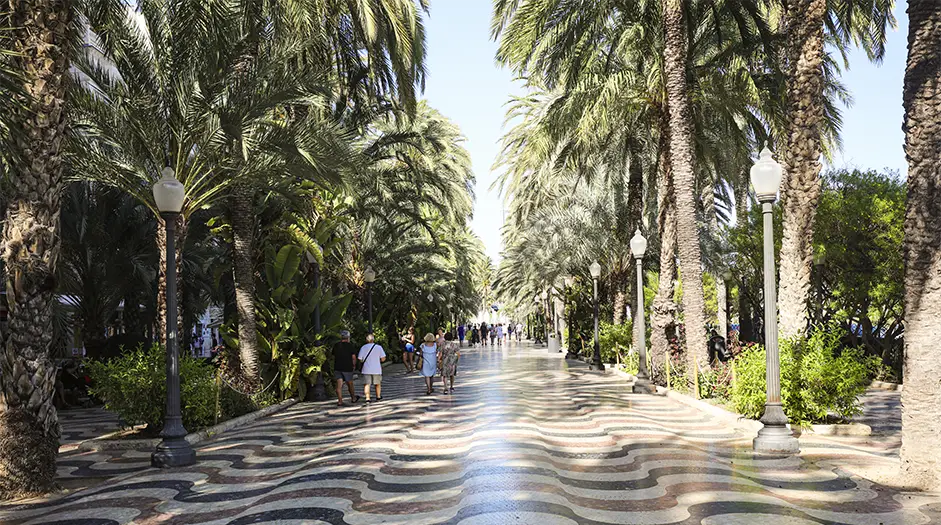
Text and photos: Ville Ryynänen
